Zeiss Batis 18mm F/28 Lens for Sony E Mount Review
When we interviewed product manager Christophe Casenave two years agone, he fabricated it very articulate just how important the Sony full-frame mirrorless system was to Zeiss. Today, with no less than 6 lenses designed specifically for the A7 series, we now have a clear picture of the High german brand's commitment, not only to designing lenses in partnership with Sony but as well to producing a complete catalogue of its ain products.
The 18mm f/2.eight is the third lens in the Batis family which is the autofocus serial designed for the Fe organisation. It has a Distagon optical design and is too the most expensive of the three. It is the 2nd widest autofocus prime lens produced for the Sony A7 cameras after the Samyang 14mm.
When I tested the Loxia 21mm (transmission focus series), I thought it would be hard to make something better but the 18mm definitely challenges that presumption.
At the hazard of becoming repetitive, Zeiss has delivered yet another excellent lens for the system. Astro and architecture photographers especially will dearest information technology. Curious? Then keep reading!



Zeiss Batis 2.viii/18 main specs
- Mount: Due east-mount
- Format coverage: 35mm (36×24)
- Focal length: 18mm
- Maximum aperture: 2.8
- Minimum aperture: 22
- Number of aperture blades: ix circular aperture blades
- Bending of view: 99°
- Closest focusing distance: 25cm
- Lens configuration: 11 elements / 10 groups
- Special elements: 2 Aspherical, 5 special drinking glass, 2 aspherical and special glass elements
- Lens surface coating: Yes (T Blanket)
- Maximum image magnification: 0.1x
- Optical Image Stabilizer: None
- Dimensions: ø78 x 95 mm
- Filter diamater: ø77mm
- Weight: 330g
Video review
Below you can watch our video review of the Batis ii.eight/eighteen.
Design and ease of apply
The Batis 18mm is slightly longer than that 25mm that I had the chance to test terminal year but information technology doesn't feel whatsoever heavier. At 330g, information technology is relatively light and doesn't unbalance a camera like the A7r II.
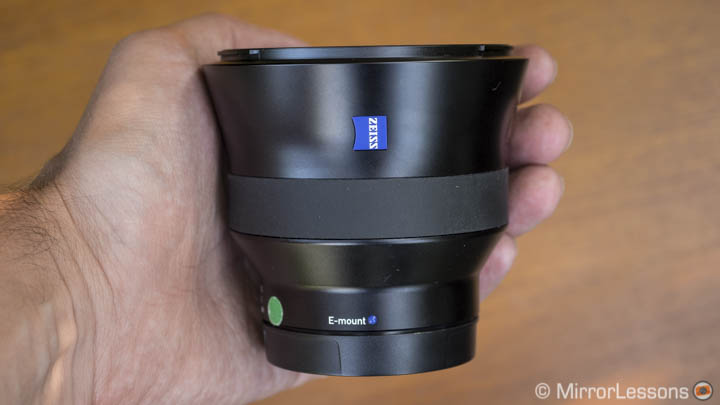
The lens has a metal build and is weather resistant. I used it a couple of times in light pelting and there was null to worry about. It comes with a plastic hood.
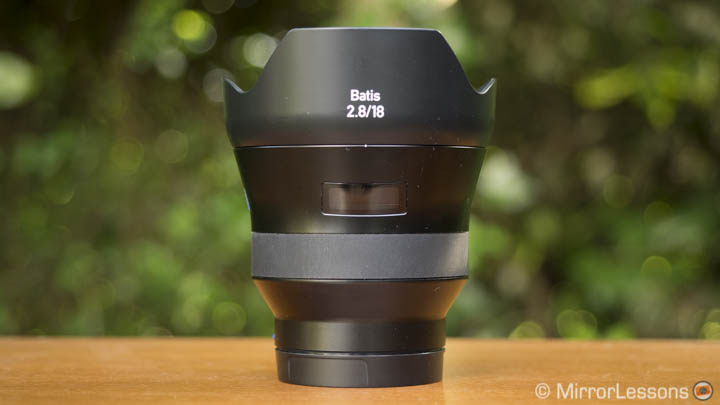
Like the other two Batis lenses (25mm and 85mm), the 18mm f/2.8 has an OLED screen on the barrel. It automatically activates when you ability on the photographic camera. It shows the focus distance and depth of field calibration, interim equally a digital version of the classic altitude scale you will detect on many transmission focus lenses (including the Loxias).
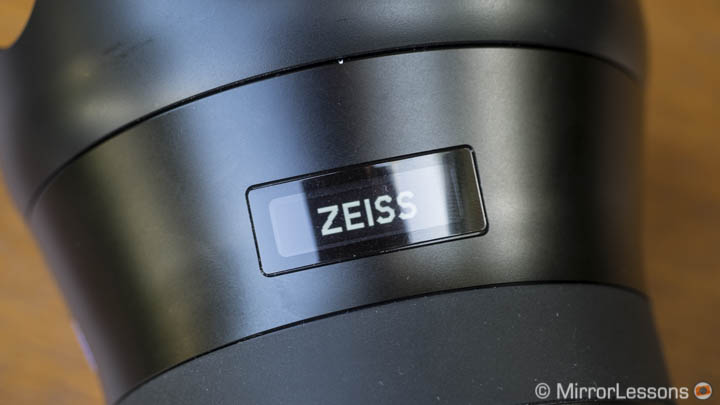
You can also change a few settings on the OLED screen:
- if you plough the focus band to reach the shortest focus distance, an arrow on the left will announced indicating you've reached the minimum distance. If yous keep turning the focus ring 360°, you tin switch from meters to feet.
- in the contrary management and starting from the infinity point (an pointer will display on the right), go along turning the ring for some other 360° and yous can choose to actuate or deactivate the OLED screen when you are in autofocus or manual focus manner.
In daylight, the OLED screen can be hard to read at times depending on how the light reflects off the screen.
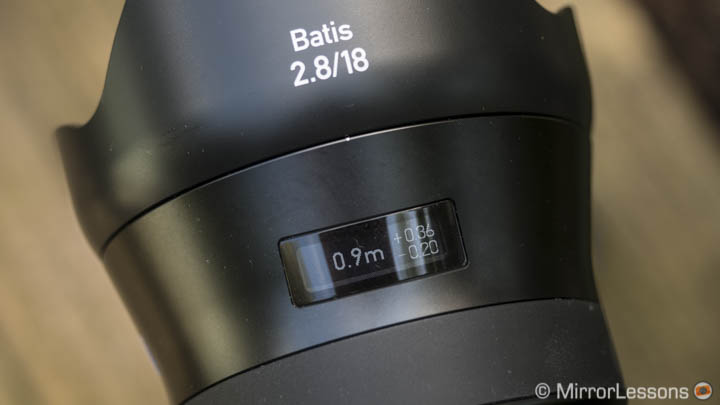
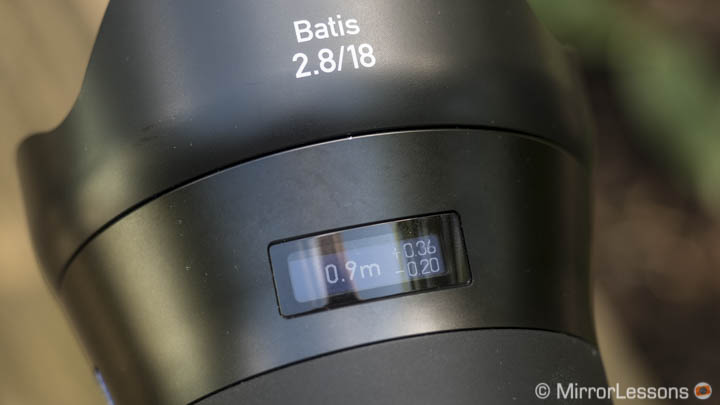
Like the Batis 25mm, I find it more than useful in low-light situations. However I do have a complaint: the screen doesn't evidence a precise focus distance past 5m. Instead it just displays < 5m.
Unfortunately for astro-photography the OLED screen is non really helpful.
When I set the focus point the first time, I have to make sure that the stars are tack precipitous, then I employ focus magnification on the photographic camera'southward LCD. The rear monitor of the A7r Two also indicates a precise focus distance when I plough the focus ring. When my focus indicate is set, I tin can read the exact distance (in that case 23m).
Still because the OLED screen on the lens won't evidence me the same information (merely < 5m), I can't employ information technology every bit a reference to double check my focus distance or to re-conform my focus point betwixt one shot and some other if in the concurrently I've moved the ring while changing positions or compositions. I wish the OLED screen could bear witness the same distance that the camera displays on the LCD screen: it would requite it a purpose and create a improve user experience.
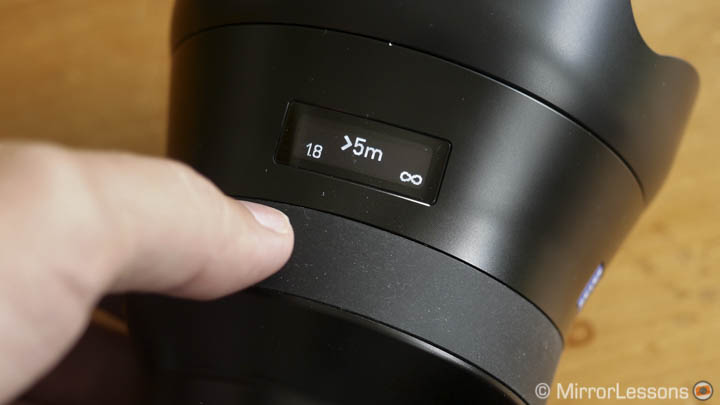
The focus ring is a "fly-by-wire" type and is covered with rubber similar all the recent Zeiss lenses (Loxia excluded). The transmission focus experience is okay but will require you lot to turn the ring a lot if you need to switch between opposing focus distances. I acknowledge that after testing the Sony G primary lenses, I now have a very strong reference when it comes to "wing-by-wire" focus rings. The ane on the Batis is good but not the best.
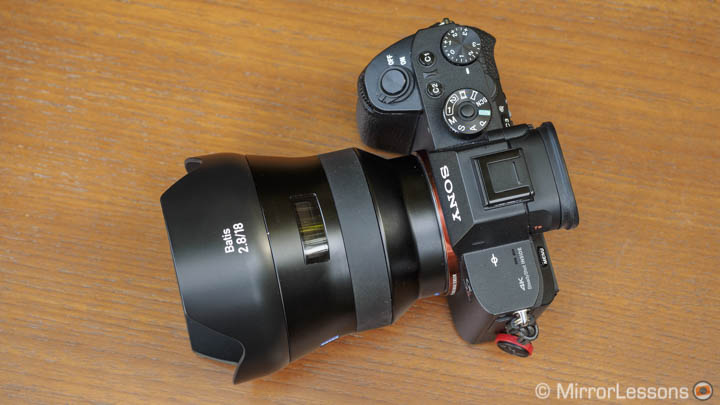
At that place is nothing to declare apropos the autofocus: information technology is fast and reliable when used on the A7r Ii in both single and continuous mode. The performance is slightly slower for video merely still more decent.
The 18mm lacks optical stabilisation. With the A7r marker II that has in-body 5-centrality stabilisation, I managed to have a sharp shot downwards to 1/2s. However to increase your keeper rate, I advise yous to stay above 1/5s. With not-stabilised A7 cameras, I would't go under 1/30s.

As a final note, the lens can accept 77mm circular filters which excludes the Lee Seven5 series unfortunately (yous will need the 100mm series).
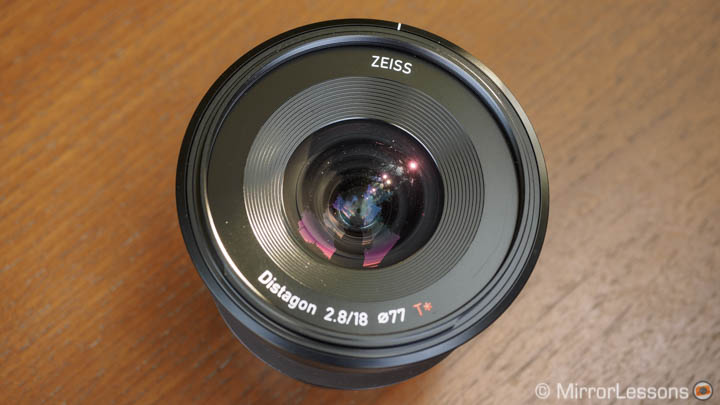
Optical quality
The optical quality of this lens is really excellent. It is the main reason you lot might want to consider it for your A7 camera and information technology doesn't disappoint in any manner.
Offset let's talk about sharpness: it performs well at f/two.8 already not just at the eye but as well at the corners. Top performance is found at f/iv and it remains excellent up to f/11. As expected some diffraction kicks in at f/16 but only becomes annoying at f/22.

Click on the image to open the full res sequence at all apertures


During my week of testing the weather wasn't very expert, so I just managed to exam the lens at night just once. The neat operation at f/ii.viii is confirmed when shooting stars in the dark night sky. Comatic and chromatic aberration is very well contained and I oasis't come beyond any invasive comet-like shapes. Astigmatism is very low likewise.
So astrophotographers, y'all will exist pleased to know that this lens suits the genre very well. Really, it might be the best native FE lens y'all can find right at present for this specific chore.

Click on the prototype to open the total res version

The Batis 18mm can focus as shut every bit 25cm in transmission focus style (30cm with autofocus). Getting an attractive shallow depth of field is not piece of cake because of the short focal length. Most of the fourth dimension you lot can terminate up with a busy groundwork which makes the whole image look a little as well disruptive. The bokeh itself is cracking. It has rounded specular highlights (with onion rings however). At times with the right groundwork and the correct lite, you can get a decent "flossy" rendering – nil that blows your mind only the results tin can be decent. That said, the number of times you'll take an paradigm like this can be easily counted on one hand.


Vignetting is non-issue with the RAW files in one case you apply the lens profile in Lightroom or a similar software. As for the OOC JPG, the camera is less precise and some vignetting remains at f/2.viii especially.


My determination is a piddling dissimilar apropos barrel distortion: you get equal results with the in-camera JPG and the RAW file (with the lens profile applied once again). Overall distortion is well contained on this lens and the departure between the native rendering and the corrected version is non huge.


I observe the performance of this lens really excellent for architecture, both indoor and out.
Perspective distortion, which is normal for a wide angle lens, is well-controlled and the lens gives yous a very natural and counterbalanced result.






Flare resistance is excellent in well-nigh situations. In strong and direct sunlight withal, yous can encounter some small ghost flares.




Finally, at f/2.8 and f/iv yous tin come across some light purple fringing especially in the farthermost corners. At the eye you volition only see some in heavy backlit situations but both cases tin be corrected easily in mail. In all other situations, CA isn't an issue.

Conclusion
This wide bending lens tin can proudly stand beside the Loxia 21mm and the Batis 25mm. For specific assignments like astro-photography or architecture it is actually the about advisable choice considering of the wider field of view and bang-up optical performance. Sharpness at f/2.8 is already excellent, flare resistance is good, coma is very low and distortion is well-independent.

The merely criticism I have is related to the ease of employ. The lens is weather sealed, calorie-free and solid: that'southward groovy. The focus ring is okay considering that information technology is an electronic type. However the OLED screen lacks some precision where yous need it the most (astro-photography) so you have to rely on the distance scale the camera provides on its LCD/EVF. And so the advantage of having such a screen on the lens barrel disappears.
If I want to nitpick, I can also add that I would dear to meet an aperture ring and an AF/MF switch similar some Sony lenses. I understand that Zeiss wants to stay faithful to the design they've created for the Batis series merely these additions only make a lens easier and more pleasurable to utilize. And that is what I look from a Zeiss lens: not just optical quality but a great user experience.

Finally, we have the price. The lens is not cheap and costs effectually $1500. In my stance it is worth the investment because of its optical quality if you know exactly what you intend to employ it for.
 What I like about the Zeiss Batis 18mm f/ii.8:
What I like about the Zeiss Batis 18mm f/ii.8:
- It's Zeiss optical quality at its all-time: excellent sharpness at all apertures, little distortion, low coma, flare and CA
- Proficient bokeh at f/ii.8 when you lot focus at the shortest distance
- Weather sealing and low-cal construction
- Expert autofocus operation
 What I don't similar about the Zeiss Batis 18mm f/two.8:
What I don't similar about the Zeiss Batis 18mm f/two.8:
- I wish the OLED screen would evidence a more precise focus distance by 5m when manual focusing for astro work
- An aperture band and AF/MF switch would ameliorate the user experience
Additional read:
- Loxia 2.8/21 review
- Zeiss Batis two/25 review
If you are wondering which is improve between the 18mm and the Loxia 21mm, make sure to go along following us. A comparison is coming soon!
Source: https://www.mirrorlessons.com/2016/07/18/zeiss-batis-18mm-f2-8-review-sony-e-mount/
Belum ada Komentar untuk "Zeiss Batis 18mm F/28 Lens for Sony E Mount Review"
Posting Komentar